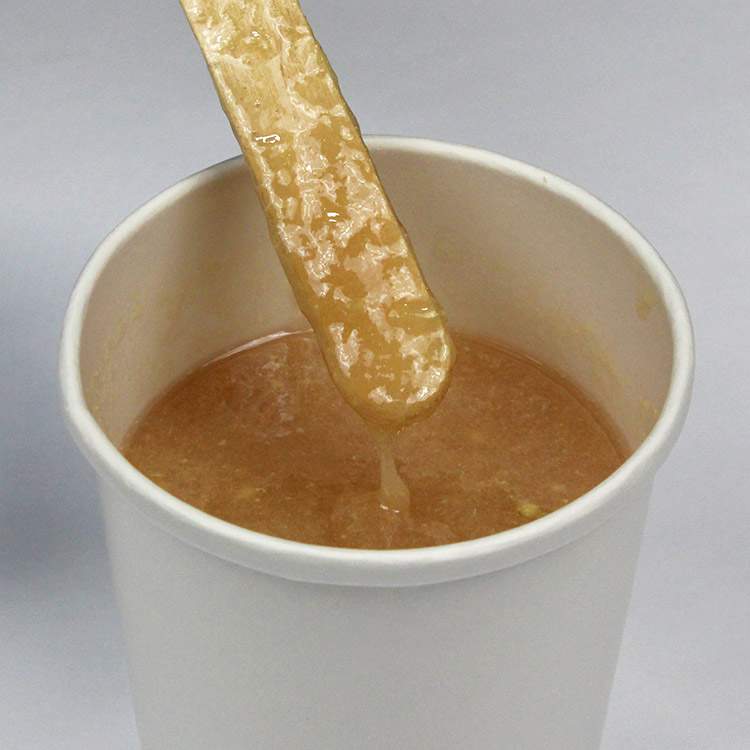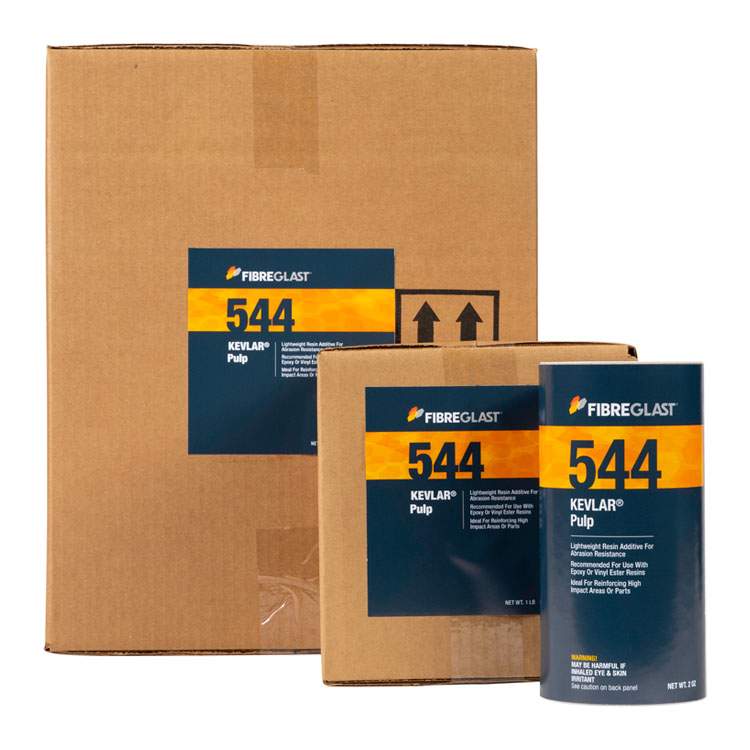Kevlar® Pulp
Details
Details
Reinforce High-Impact Areas
Reinforce High-Impact Areas
Kevlar® Pulp is the lightest of the fillers and highly abrasion resistant. Areas of high impact can be reinforced easily with this strong and durable material. Also, use it to make beveled fillets along edges of honeycomb cores to smooth the transition of fabric skins.
Recommended for use with epoxy or vinyl ester resin. Add filler after adding catalyst to resin.
Mix ratio is 1:15 (pulp to resin).
KEVLAR® is made with genuine DuPont™ KEVLAR® fiber. DuPont™ and KEVLAR® are registered trademarks of E.I. du Pont de Nemours and Company and are used with permission.
Kevlar® pulp is a brand of aramid fiber that has been processed into a pulp-like form. It is primarily made from Kevlar® fibers, which are known for their high strength and excellent resistance to impact and abrasion. Here is some information about the use of Kevlar® pulp in composites:
- Reinforcement: Kevlar® pulp is added to composite materials, such as resins, to provide reinforcement and enhance the mechanical properties of the material.
- Improved Strength and Impact Resistance: The addition of Kevlar® pulp increases the strength and impact resistance of composites. Kevlar®fibers have exceptional tensile strength, which allows them to distribute and absorb forces, making the material more resistant to impact and deformation.
- Lightweight: ® pulp contributes to the lightweight nature of composites. Kevlar® fibers are known for their high strength-to-weight ratio, allowing composites reinforced with Kevlar pulp to maintain strength while minimizing weight.
- Flexibility and Energy Absorption: Kevlar®pulp enhances the flexibility and energy absorption properties of composites. It helps dissipate energy and withstand dynamic loads, making it suitable for applications where impact resistance and flexibility are important.
- Chemical Resistance: Kevlar® fibers are highly resistant to a wide range of chemicals, including acids and bases. When used as pulp in composites, Kevlar® contributes to the chemical resistance of the material, allowing it to withstand exposure to corrosive substances.
- Thermal Stability: Kevlar® fibers exhibit excellent thermal stability and resistance to high temperatures. When incorporated into composites, Kevlar® pulp can improve the material's ability to withstand elevated temperatures without significant loss of mechanical properties.
- Cut and Abrasion Resistance: Kevlar® pulp enhances the cut and abrasion resistance of composites. The strong and durable nature of Kevlar® fibers helps protect the material from wear and damage caused by friction or contact with sharp objects.
- Fire Resistance: Kevlar® fibers have inherent flame resistance properties, making composites reinforced with Kevlar® pulp more resistant to ignition and flame spread.
It is important to note that the specific properties and performance of composites using Kevlar® pulp will depend on various factors, including the pulp content, fiber orientation, matrix material, and processing conditions.
Data Sheets
Data Sheets
Shipping
Shipping
Sizes
Sizes
Collapsible content
Videos
Reviews
Had to come back and write a review because there wasn't any yet. Im rebuilding a transom in my boat and needed a filler to strengthen the bonding glue i was using for the plywood layers going in. I used it in an epoxy resin I had made up and used a whole bag for the gallon or so i mixed up. After i made a peanut butter thickness mixture i clamped the plywood down until it started to squeeze out of the out-drive opening. I then made support fillets around the area I just replaced. The next day when I went back the dried resin was beyond strong. I couldn't break off the drips that were hanging no matter how hard i tried, they were that solid. I have every bit of faith taking this boat 100 miles + offshore now. Highly recommend!
Fast Shipment, Best quality product. Thanks!
This stuff is awesome. I mixed a test bit as soon as it arrived and the composite it makes is tough as nails and very lightweight.





